Supply Friendly

How can suppliers be motivated to adopt more eco-friendly practices in their operations to support a greener supply chain ?
**Motivating Suppliers to Adopt Eco-Friendly Practices** In today's world, environmental sustainability has become a global concern, and businesses are increasingly looking towards greener supply chains. However, the success of a green supply chain largely depends on the suppliers' willingness to adopt eco-friendly practices. This article provides strategies for motivating suppliers to embrace sustainable operations, including financial incentives, collaborative approaches, transparency and accountability, technology and innovation, and regulatory compliance. By implementing these strategies, businesses can effectively motivate their suppliers to adopt eco-friendly practices, which not only benefits the environment but also enhances business reputation and customer satisfaction.

What is the role of consumers in driving more sustainable supply chain practices through their purchasing decisions ?
Consumers play a crucial role in driving more sustainable supply chain practices through their purchasing decisions. By choosing products that are produced using environmentally friendly and socially responsible methods, consumers can influence companies to adopt more sustainable practices throughout their supply chains. This can lead to reduced carbon emissions, improved working conditions, and better resource management. The key points include education and awareness, green consumerism, supplier selection, product design, brand loyalty, public pressure, regulatory influence, investor interest, innovation, and collaboration.

What policies and regulations are currently in place to encourage more sustainable supply chain practices ?
Policies and Regulations Encouraging Sustainable Supply Chain Practices discusses various government initiatives, industry standards, and international agreements that promote sustainable supply chain practices. Government policies such as green procurement, carbon pricing, and eco-labels incentivize businesses to adopt environmentally friendly operations. Industry standards like CSR and LCA help companies understand and reduce their ecological footprint. International treaties like the Paris Agreement and Basel Convention provide a global framework for sustainable practices. Together, these measures form a comprehensive system to support sustainable supply chains worldwide.

How can smart contracts improve supply chain management ?
Smart contracts can revolutionize supply chain management by automating transactions, enhancing transparency, improving efficiency, enabling real-time tracking, and reducing risks. This decentralized and automated approach can save time, reduce costs, prevent fraud, and improve overall trust between parties in the supply chain.

Can small businesses also offer climate-friendly products ?
Small businesses can offer climate-friendly products by adopting sustainable practices and eco-friendly alternatives. They can reduce their carbon footprint, meet customer demand for eco-friendly options, save costs, gain a competitive edge, and build reputation. They can source materials sustainably, design energy-efficient products with reduced packaging, make operational changes like using green energy, and promote education about sustainability. Despite challenges like higher costs, they can seek funding, build partnerships, and educate customers to overcome these obstacles.
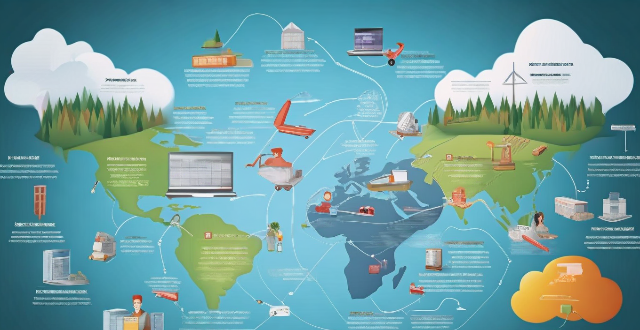
What are some best practices for managing risk associated with climate change in a global supply chain ?
This article outlines best practices for managing risk associated with climate change in a global supply chain. It suggests assessing climate change risks by identifying potential impacts and evaluating vulnerabilities, developing a risk management plan that includes setting clear objectives and implementing mitigation measures, and monitoring and reviewing performance through tracking progress against objectives and continuously improving strategies. Key strategies include diversifying supplier networks, investing in resilient infrastructure, improving energy efficiency, enhancing supply chain transparency, promoting sustainable practices, establishing regular reporting processes, benchmarking against industry standards, soliciting stakeholder feedback, revising risk management plans regularly, participating in collaborative learning opportunities, and fostering a culture of innovation within the organization.

How do I choose eco-friendly cleaning products ?
This text provides a comprehensive guide on choosing eco-friendly cleaning products, emphasizing the importance of understanding eco-friendly labels, checking ingredient lists for harmful chemicals, opting for concentrated and reusable packaging options, supporting green brands, and considering homemade cleaners. By following these steps, consumers can make informed choices that contribute to a healthier planet and home environment.
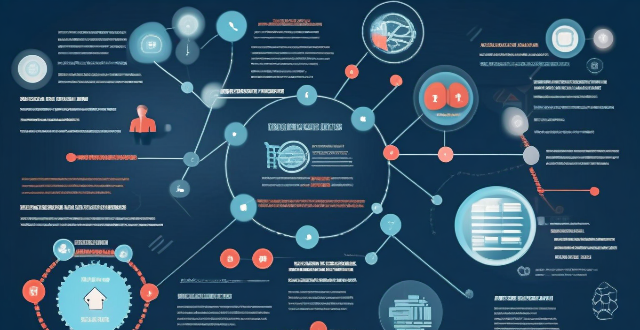
How can blockchain solve the issue of supply chain management ?
Blockchain technology can revolutionize supply chain management by addressing various challenges faced by businesses. It improves visibility and traceability, reduces paperwork and manual processes, streamlines payment processes, enhances data security, and builds trust among stakeholders. With its potential to solve many of the issues faced by businesses in supply chain management, blockchain is an ideal solution for modern supply chains.

Can using climate-friendly products really make a difference in combating climate change ?
Can Using Climate-Friendly Products Really Make a Difference in Combating Climate Change? Understanding Climate-Friendly Products: Clarification of what constitutes climate-friendly products, which are designed to have a lower environmental impact than their conventional counterparts. Individual Actions and Collective Impact: Small Changes, Big Results: The cumulative effect of individual actions can lead to significant environmental benefits, such as reduced carbon emissions and lowered resource depletion. Market Influence: Consumer choices drive market demand for eco-friendly products, encouraging businesses to adopt sustainable practices. Limitations and Considerations: Scale of Impact: Personal choices are essential but must be part of a broader strategy for addressing climate change effectively. False Sense of Accomplishment: Risk of individuals feeling they have done enough by using a few eco-friendly products. Cost and Accessibility: Potential barriers to adoption due to higher costs or limited availability. Conclusion: Using climate-friendly products can make a difference in combating climate change, but it is one piece of a larger puzzle that requires widespread adoption, innovation, and systemic change.
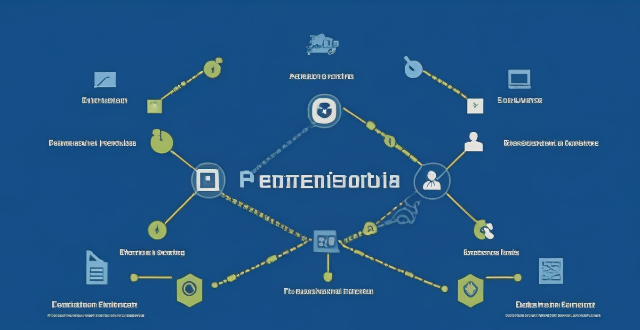
How do geopolitical factors influence the sustainability efforts of global supply chains ?
Geopolitical factors significantly influence sustainability efforts in global supply chains by affecting trade policies, political stability, resource control, infrastructure development, and cultural attitudes towards sustainability. These elements determine the costs, efficiency, and environmental impact of global production networks. Understanding these dynamics is vital for businesses aiming to build resilient and sustainable supply chain operations.

Can you recommend any eco-friendly sports equipment options ?
Eco-friendly sports equipment options include recycled yoga mats, bamboo skateboards, organic cotton gym clothes, recycled plastic outdoor gear, eco-friendly surfboards, biodegradable tennis balls, reusable water bottles, and sustainable running shoes.

What role do consumers play in supporting climate-friendly products ?
Consumers have a crucial role in promoting climate-friendly products through awareness, eco-friendly purchasing habits, advocacy, and lifestyle changes.

How can businesses measure and report their environmental performance throughout their supply chains ?
Measuring and reporting environmental performance in supply chains involves setting clear objectives, conducting a baseline assessment, developing an action plan, implementing and monitoring progress, and reporting performance transparently. Adopting standardized metrics, engaging stakeholders, and continuously improving are best practices to effectively manage environmental impact throughout the supply chain.

How do climate-friendly products contribute to sustainable development ?
The article discusses the importance of climate-friendly products in sustainable development. These products help reduce greenhouse gas emissions, conserve natural resources, support renewable energy sources, and encourage eco-friendly lifestyles. By using less energy or producing fewer pollutants during their production, use, and disposal, these products contribute to a healthier planet for future generations. Examples include energy-efficient appliances, electric vehicles, reusable water bottles made from recycled materials, bamboo toothbrushes, solar panels, wind turbines, hydroelectric generators, cloth shopping bags, and compostable food containers. As consumers become more aware of the environmental impact of their choices, they can make informed decisions that support a more sustainable future.
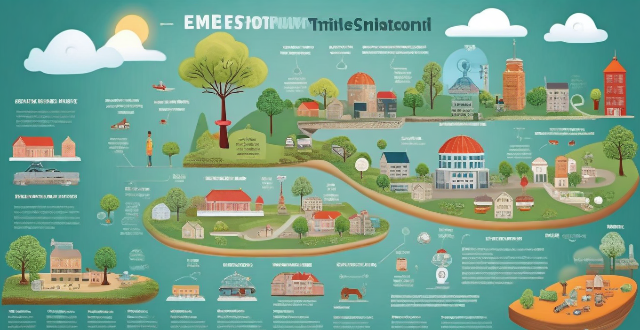
What are the economic implications of investing in climate-resilient supply chain infrastructure ?
This article explores the various economic implications of investing in climate-resilient supply chain infrastructure. It highlights how such investments can lead to cost savings, increased productivity and efficiency, improved insurance rates, enhanced supply chain visibility, and competitive advantage. The article also emphasizes the importance of building a strong brand reputation and accessing new markets through sustainable and resilient practices. Overall, it underscores the significance of prioritizing investments in climate-resilient supply chain infrastructure for businesses and economies around the world.
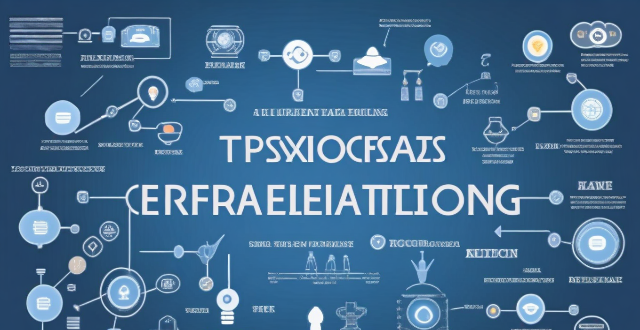
What role does technology play in ensuring a continuous supply of sustainable energy ?
The text discusses the pivotal role of technology in securing a consistent supply of sustainable energy. It highlights how technology enhances efficiency, reduces costs, mitigates environmental impacts, boosts energy security, and fosters innovation and job creation in the renewable energy sector.

Are there any government incentives for producing or purchasing climate-friendly products ?
Governments worldwide have implemented various incentives to promote the production and purchase of climate-friendly products, such as tax breaks, subsidies, grants, and regulations. These initiatives aim to reduce greenhouse gas emissions and promote sustainable practices.

What are the impacts of global warming on agricultural production and food supply ?
This article discusses the impacts of global warming on agricultural production and food supply, including changes in climate patterns, reduced crop yields, loss of biodiversity, decreased nutrient content, heat stress in livestock, changes in feed availability, increased risk of disease, reduced food availability, increased food prices, and food safety concerns.

What are the benefits and challenges of using drones for medical supply delivery ?
**Benefits of Using Drones for Medical Supply Delivery:** - **Increased Efficiency:** Drones can cover large distances quickly and bypass obstacles. - **Accessibility to Remote Areas:** Ideal for reaching rural or disaster-affected regions. - **Cost Savings:** Lower manpower and operational costs compared to traditional methods. - **Improved Safety:** Eliminates human errors and operates in hazardous conditions. - **Real-Time Tracking:** Ensures accountability and peace of mind for senders and recipients. **Challenges of Using Drones for Medical Supply Delivery:** - **Regulatory Issues:** Strict regulations and complex permit processes limit drone operations. - **Technical Constraints:** Limited load capacities, battery life, and weather conditions affect reliability. - **Security Concerns:** Risks of interception and tampering with cargoes. - **Public Perception:** Addressing privacy concerns and gaining public acceptance is essential. - **Infrastructure Development:** Significant investment required for support infrastructure.

Are there any eco-friendly luxury resorts ?
Eco-friendly luxury resorts are gaining popularity, offering a luxurious experience while minimizing environmental impact. These resorts implement sustainable practices such as using renewable energy sources, reducing water usage, and supporting local communities through their employment practices. Some of the top eco-friendly luxury resorts include Six Senses Laamu in the Maldives, Nayara Springs in Costa Rica, Amangiri in the USA, Soneva Fushi in the Maldives, and Banyan Tree Mayakoba in Mexico. By choosing to stay at one of these eco-friendly luxury resorts, travelers can contribute to protecting our planet while enjoying a memorable vacation.

Can you recommend family-friendly cruise options ?
This text provides recommendations for family-friendly cruise options, including Royal Caribbean International, Disney Cruise Line, Norwegian Cruise Line, and Carnival Cruise Line. Each cruise line offers unique amenities and activities that cater to families with children of all ages, making cruising an enjoyable experience for the whole family. The text also highlights the various features of each cruise line, such as family-friendly accommodations, kid-friendly entertainment, onboard pools, dining options, character encounters, kids clubs, family-friendly shows, spacious accommodations, recreational facilities, and affordable and fun cruise experiences.

Are climate-friendly products more expensive than regular ones ?
Climate-friendly products are becoming more popular, but there is a misconception that they are always more expensive than regular ones. The cost of these products can be influenced by factors such as manufacturing processes, materials used, and research and development costs. However, eco-friendly options may actually be less expensive in the long run due to energy efficiency, durability, and government incentives. It is important for consumers to consider both short-term and long-term costs when deciding whether to choose climate-friendly products.

In what ways can businesses engage in sustainable supply chain management as a key component of their CSR programs ?
The text discusses the importance of sustainable supply chain management in corporate social responsibility (CSR) programs. It emphasizes setting clear objectives and goals, conducting supplier audits and assessments, collaborating with suppliers, measuring performance and reporting results, and continuously improving and innovating as key steps in sustainable supply chain management. The text suggests that these practices can help businesses demonstrate their commitment to sustainability while also improving their bottom line.

How has the COVID-19 pandemic highlighted the importance of resilient supply chain management in the face of climate-related disruptions ?
The text discusses the impact of the COVID-19 pandemic on supply chain management and emphasizes the importance of resilient supply chain management to withstand future climate-related disruptions. The pandemic caused significant disruptions in the global supply chain, including disruption of global trade, bottlenecks, shortage of raw materials, and labor shortages. A resilient supply chain is adaptable, diversified, collaborative, and leverages technology to improve efficiency, reduce waste, and increase transparency. These characteristics ensure that the supply chain can withstand not only the current crisis but also future climate-related disruptions.

What are some family-friendly cities for a weekend getaway ?
When planning a weekend getaway with your family, itWhen planning a weekend getaway with your family, it a destination that offers a mix it's essential to choose a destination that offers a mix of fun, educational, and relaxing activities for all ages. Here are some family-friendly cities that cater to the needs of both children and adults: Orlando, Florida; San Diego, California; Austin, Texas; Chicago, Illinois; and Nashville, Tennessee. These cities offer a range of activities such as theme parks, beaches, zoos, museums, outdoor adventures, music venues, historical sites, and green spaces. To plan a successful family getaway, research accommodations that offer kid-friendly amenities like pools or game rooms, plan age-appropriate activities in advance, pack essentials like sunscreen and snacks, and allow flexibility for spontaneity and relaxation.

Are there any eco-friendly or sustainable options for iPhone cases ?
Eco-friendly and sustainable options for iPhone cases include Pela Case made from plant-based materials, Ecotecture using recycled materials, and Casetify Re/Case made from recycled plastic bottles. Apple's trade-in program and recycling programs also promote sustainability by reducing e-waste. Some companies use eco-friendly packaging materials to reduce waste.
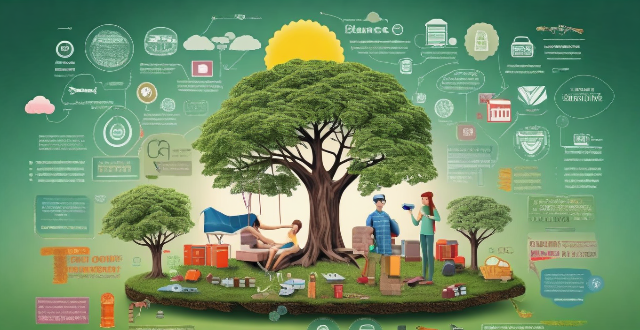
How can we encourage people to adopt eco-friendly habits in their daily lives ?
The article discusses ways to encourage eco-friendly habits, including education and awareness, incentives and rewards, and community involvement. It emphasizes the importance of raising awareness about environmental issues, teaching sustainable practices, offering discounts and rebates for eco-friendly products, providing tax breaks and grants for green initiatives, collaborating with local organizations, and fostering a sense of community through online platforms and events. The conclusion highlights the significance of adopting eco-friendly habits for the well-being of the planet and calls for collective action to create a brighter future.

Are there any eco-friendly sportswear brands that are also trendy ?
Sportswear has become a significant part of our daily lives, and many people are looking for eco-friendly options. However, finding sportswear brands that are both trendy and environmentally conscious can be challenging. In this article, we discuss some of the best eco-friendly sportswear brands that are also stylish and fashionable. Patagonia is a well-known brand that focuses on creating high-quality outdoor clothing and accessories using sustainable materials such as organic cotton, recycled polyester, and traceable down. Their sportswear line includes stylish jackets, pants, and shirts that are perfect for any outdoor activity. prAna is another popular brand that offers sustainable and stylish sportswear. They use organic cotton, hemp, and recycled materials to create their clothing, including comfortable leggings, joggers, and tank tops that are perfect for yoga or running. Adidas collaborated with Parley for the Oceans to create a sportswear line made from recycled ocean plastic. The collection includes shoes, jerseys, and shorts that are not only eco-friendly but also stylish and trendy. Reebok teamed up with Usain Bolt to create a sportswear line that is both eco-friendly and stylish. The collection includes tracksuits, t-shirts, and sneakers made from sustainable materials such as recycled polyester and organic cotton. Lululemon recently partnered with Girlfriend Collective to create a sportswear line made from recycled water bottles. The collection includes leggings, bras, and shorts that are not only eco-friendly but also stylish and comfortable. In conclusion, there are several eco-friendly sportswear brands that are also trendy. These brands use sustainable materials to create stylish and comfortable clothing that is perfect for any outdoor activity. By choosing these brands, you can make a positive impact on the environment while staying fashionable.

Are there any shopping apps specifically designed for eco-friendly products ?
There are several shopping apps available that are specifically designed for eco-friendly products. These apps allow users to browse and purchase products that are sustainable, organic, and environmentally friendly. Some of the popular shopping apps for eco-friendly products include EcoShopper, GoodOnYou, and Think Dirty. EcoShopper is a shopping app that offers a wide range of eco-friendly products, including organic food, natural beauty products, and sustainable fashion. The app allows users to search for products based on their specific needs and preferences, making it easy to find sustainable alternatives to everyday items. GoodOnYou is a fashion app that rates brands based on their sustainability and ethical practices. The app provides users with information about a brand's environmental impact, labor practices, and animal welfare policies, allowing them to make more conscious purchasing decisions. Think Dirty is a beauty app that helps users identify the ingredients in their cosmetics and personal care products. The app provides information about the safety and environmental impact of each ingredient, allowing users to make more informed decisions about their purchases. In conclusion, these shopping apps are specifically designed for eco-friendly products, making it easier for consumers to make more conscious purchasing decisions. By using these apps, users can support sustainable brands and reduce their environmental impact while still enjoying high-quality products.